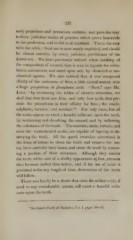Page 521 - My FlipBook
P. 521
517
early prejudices and pernicious customs, and pave the way
to those judicious modes of practice which prove honorable
to the profession, and useful to all mankind. This is the case
with the acids : their use is now nearly exploded, and should
be almost entirely, by every judicious practitioner of the
dental art. We have previously noticed when speaking of
the composition of enamel, that it was, 'as regards the circu-
lation, extraneous, and acted upon only by chemical or me-
chanical agents. We also noticed that it was composed
chiefly of the carbonate of lime, a little animal matter, with
a large proportion of phosphoric acid. " Now," says Mr.
Lord, " by examining the tables of elective attraction, we
shall find that there are four, and only four acids, that pre-
cede the phosphoric in their affinity for lime ; the oxalic,
sulphuric, tartaric, and succinic."* Not only these, but all
the acids, appear to exert a baneful influence upon the teeth.
by weakening and dissolving the enamel, and by inflaming
the substance of the tooth. The muriatic, nitric, tartaric, and
even the concentrated acetic, are capable of injuring or de-
stroying the teeth. All the quack remedies advertised in
the form of lotions to clean the teeth and remove the tar-
tar, have acids for their bases, and clean the teeth by remov-
ing a portion of their substance. Although they render
the teeth white and of a chalky appearance a{ first, yet soon
they become darker than before, and if the use of acids is
persisted in for any length of time, destruction of the teeth
will follow.
There can hardly be a doubt that even the milder acids, if
used to any considerable extent, will exert a baneful influ-
ence upon the teeth.
See Good's Study of Medicine, Vol. I. pages 34—35.


